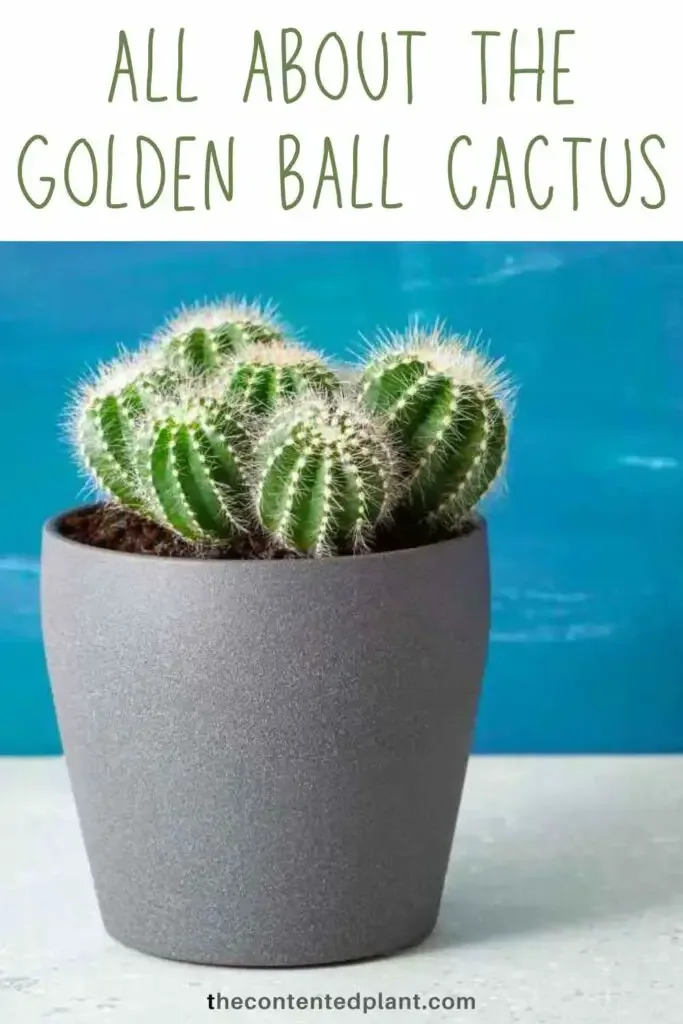The golden Ball Cactus (Parodia Leninghausii), is well-known and sought after by cactus enthusiasts and collectors. They love this cactus for its compact size, vibrant golden spines, and occasional bursts of yellow flowers.
Whether you’re a seasoned collector or a beginner plant lover, the Golden Ball Cactus is a worthy addition to your collection. This cactus starts small and round, earning it, the common name, the golden ball cactus. As it grows, the plant elongates into a golden spiky column. The cactus is mature at a bout five years. Growth is easily controlled by keeping it in a small pot.
The Golden ball is native to the South America, specifically parts of Argentina and Bolivia. This cactus has been reclassified taxonomically into five different genus at different times. Most recently, it has been reclassified as Parodia leninghausii. Taxonomic revisions are common in the plant world as new information becomes available. So you may see this cactus labeled in various ways.
Parodia leninghausiis forms as a round clump when small. As it ages the round clumps become elongated columns, covered in bright yellow spines. This charming cactus has captured the hearts of many. Consequently, it also has several common names. You may know it, or see it labeled in stores as, lemon ball cactus, golden ball cactus, or the yellow tower cactus since it grows like a tower as it ages.

Flowering:
Parodia leninghausii is known for its spectacular blooming displays in spring and summer. The blooms form on the top of the cactus, adding a burst of color to its already charming appearance. When provided with optimal conditions, this cactus produces beautiful flowers in shades of yellow.
The flowers of Parodia leninghausii have a daisy-like appearance with multiple petals radiating from a central disk. The texture of the flowers is delicate and soft to the touch, providing a delightful contrast to the cactus’s spiky exterior.
It can take a few years for this cactus to reach maturity and start producing flowers. However, with proper care and favorable conditions, some specimens may bloom at a younger age, providing an early reward for their caretakers.
To encourage blooming in Parodia leninghausii:
- Light: provide it with adequate light, specifically bright, indirect sunlight. Placing the cactus near a sunny window or using supplemental grow lights can help ensure it receives sufficient light intensity.
- Watering: Allowing the soil to dry out between waterings and avoiding overwatering can promote healthy growth and flowering.
- Adequate fertilization during the growing season. Use a balanced cactus fertilizer to provide the necessary nutrients for flower production.
Patience is key. Each cactus may have its own blooming schedule. The plant’s health depend on your care practices. Good care creates an environment conducive to blooming. The rest is up to the plant. The vibrant yellow flowers of Parodia leninghausii are worth the time and extra effort.
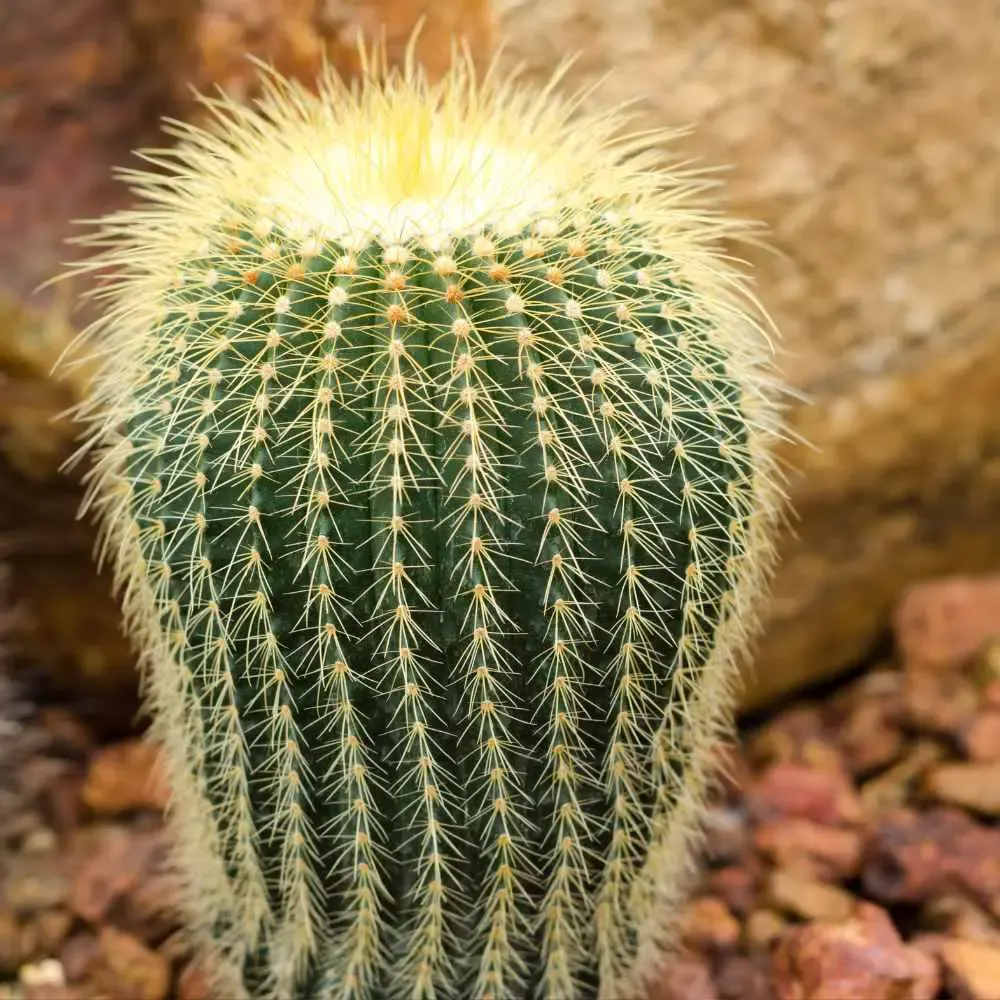
Where to Source This Cactus:
Parodia leninghausii is pretty simple to source. This is a relatively common and easy to find cactus species. So you may run across one in any garden shop with a decent cactus selection. Just remember it may not be labeled correctly due to frequent taxonomical changes it has gone through.
If you want buy one online I recommend the highly rated Queen of Succulents shop on ETSY. I bought a bunny ears cactus from her and had a wonderful experience. The bunny ears arrived on time, very cute and in great shape. She even added a bonus plant.
Shop Etsy For Parodia Leninghausii
Queen of Succulents Shop
Is Parodia Lemnighausii Toxic?
Parodia leninghausii is non toxic to animals and humans. The spines are also soft enough to touch without injury. What a great choice this cactus is for your home. Kids and pets are perfectly safe around this dessert cutie.
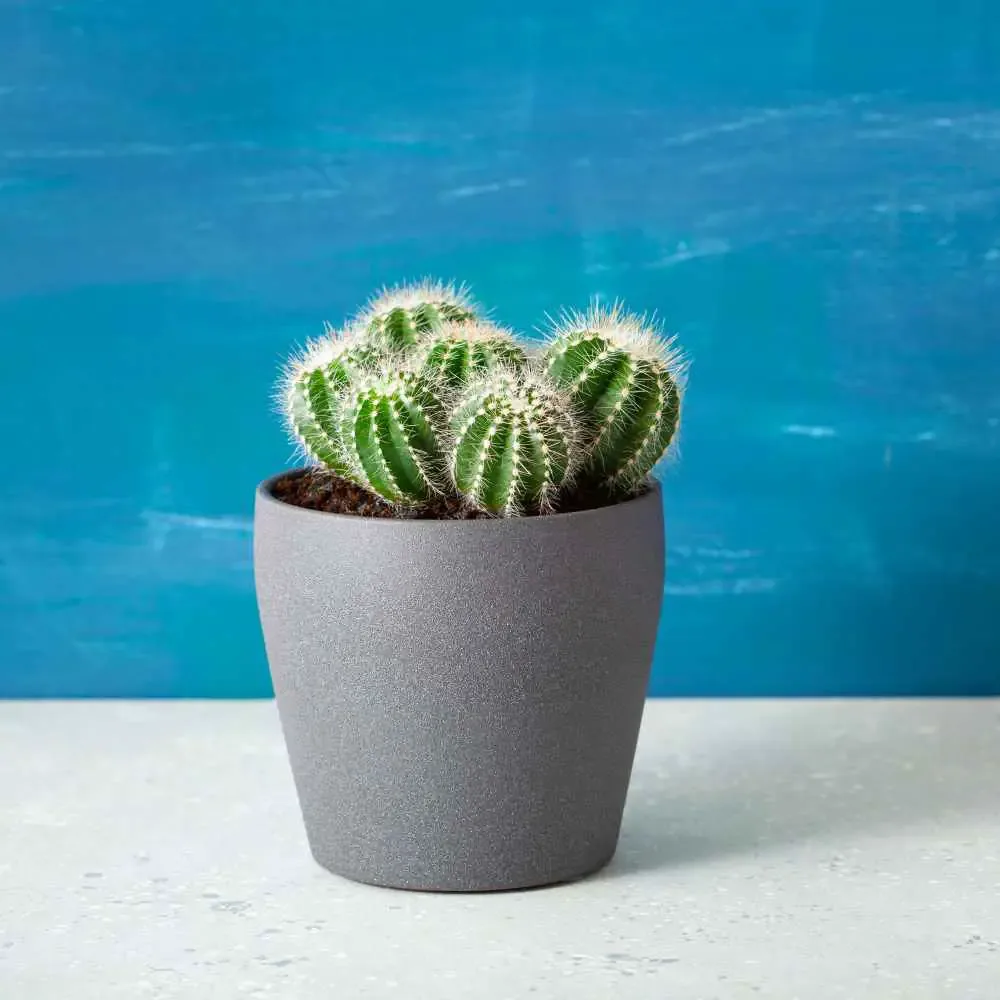
How to Care for Parodia leninghausii Indoors:
This cactus is well suited to life as an indoor houseplant. It adds a touch of natural beauty to various spaces. Its a hardy plant and adaptable to most home environments if its basic needs are met.
Parodia leninghausii typically reaches a diameter of around 4 to 6 inches (10 to 15 cm), which is a great size to fit well on windowsills, desks, or tabletops, adding a touch of the dessert to any indoor setting.
Parodia leninghausii is resilient and tolerates a range of growing conditions. Its forgiving nature makes it an excellent choice for those new to cactus care. This one is undemanding, although if you want blooms you may need to give it more attention and care.
Indoor care instructions for Parodia leninghausii (Golden Ball Cactus):
| Care Aspect | Description |
|---|---|
| Light | Bright, indirect sunlight; 4-6 hours of daily light |
| Temperature | Average to warm temperatures, 60-85°F (15-29°C) |
| Watering | Infrequent watering; allow soil to dry out between waterings |
| Soil | Well-draining cactus or succulent mix |
| Potting | Use pots with drainage holes to prevent waterlogging |
| Fertilization | Use a balanced cactus fertilizer during the growing season |
| Humidity | Average to low humidity levels |
| Propagation | Offset division, seed propagation, or grafting |
| Growth Pattern | Solitary growth habit, occasionally produces offsets |
| Flowering | Yellow flowers, typically produced in favorable conditions |
| Pruning/Trimming | Remove dead or damaged parts |
| Pests | Watch for common cactus pests like mealybugs, aphids or scale |
Remember to observe your plant and adjust care accordingly. Monitoring the plant’s health, providing proper light, water, and temperature conditions, and adapting care as needed will help ensure the well-being of your Parodia leninghausii.
If you need more information on succulent care read our support posts:
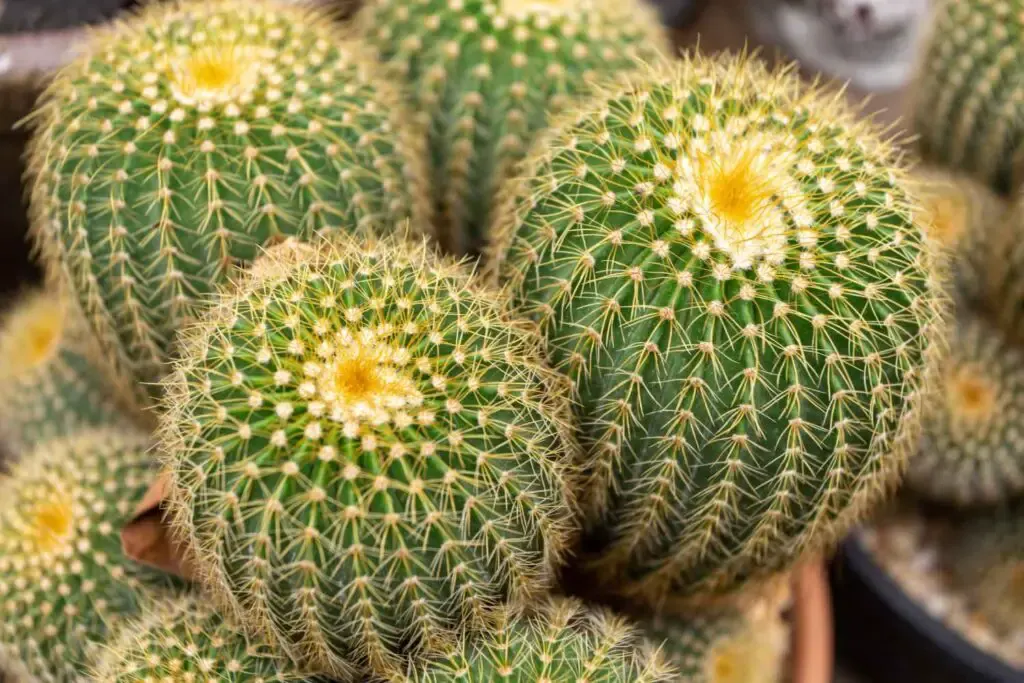
Golden Ball Cactus Propagation Methods:
Parodia leninghausii can be propagated through various methods. The most common propagation methods for this cactus species include:
- Offset division: When Parodia leninghausii produces offsets (also known as pups or “babies”), they can be carefully separated from the parent plant. Allow the offsets to dry for a few days to allow the cut ends to callus before potting them in well-draining soil. Provide appropriate care, including proper watering and light conditions, to encourage their growth into new individual plants.
- Seeds: Parodia leninghausii can be propagated from seeds. Collect ripe seeds from the plant’s flowers and sow them in a well-draining cactus or succulent mix. Keep the soil consistently moist until germination occurs, and then gradually reduce watering as the seedlings develop. Seed propagation may take longer than other methods, but it allows for genetic diversity and can be an exciting process for plant enthusiasts.
- Grafting: Grafting is another propagation method used for Parodia leninghausii. It involves attaching a piece of the cactus onto a rootstock of a different cactus species. This method is useful when trying to combine the desirable traits of different cacti. Also when dealing with slow-growing or difficult-to-propagate species. Grafting is typically done using the stem or offset of Parodia leninghausii onto a compatible rootstock, such as a faster-growing cactus species.
Each propagation method has its own advantages and considerations. Offset division is relatively straightforward and allows for the production of new plants that are genetically identical to the parent. Seed propagation introduces genetic variation and can be a rewarding process, although it requires more time and patience. Grafting is a more advanced technique that can yield interesting results but requires knowledge and skills in grafting techniques.
Growing Parodia leninghausii Outdoors:
Parodia leninghausii thrives outdoors in suitable climates. It prefers warm temperatures and can withstand a range of conditions, including full sun exposure.
This cactus is a hardy and low-maintenance plant, an excellent choice for outdoor gardens, rock gardens, or xeriscaping projects. Its ability to tolerate dry conditions and its resistance to pests and diseases make it a reliable, enjoyable addition to outdoor spaces.
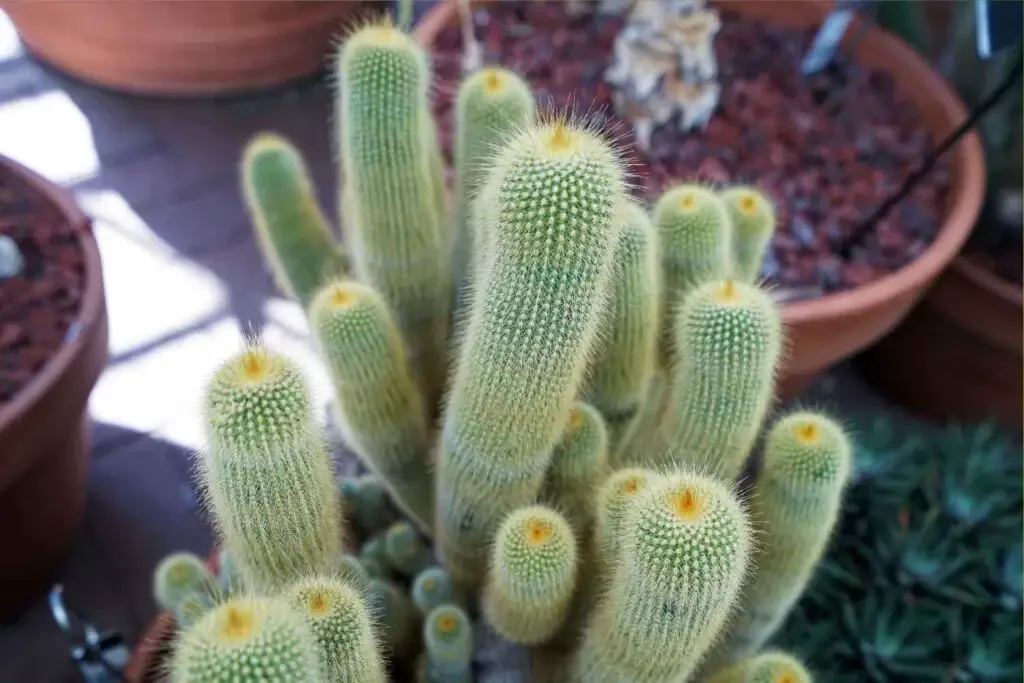
What USDA Garden Zones Support Golden Ball Cactus?
Parodia leninghausii (Golden Ball Cactus) is native to South America and is commonly cultivated in various regions around the world. It is well-suited to warm and arid climates. In terms of USDA Hardiness Zones, Parodia leninghausii is typically recommended for Zones 9 and above. However, with proper care and protection, it can be grown in some colder zones as well.
Here is a breakdown of the USDA Hardiness Zones that support the growth of Parodia leninghausii:
- USDA Hardiness Zones 9-11: Parodia leninghausii thrives in these zones, where the average minimum winter temperatures range from 20°F (-6°C) to 40°F (4°C) or higher.
- USDA Hardiness Zone 8: In Zone 8, where the average minimum winter temperatures range from 10°F (-12°C) to 20°F (-6°C), Parodia leninghausii can be grown successfully with appropriate protection during colder periods.
- USDA Hardiness Zone 7: In Zone 7, where the average minimum winter temperatures range from 0°F (-18°C) to 10°F (-12°C), Parodia leninghausii can be grown outdoors, but it requires additional protection during freezing temperatures. Providing frost protection, such as covering the cactus or moving it to a protected location, is essential.
Hardiness zone recommendations are just general guidelines. Mind your local microclimates and specific growing conditions can influence the success of Parodia leninghausii. In marginal climates or if you live in a colder zone, you can still enjoy this cactus as a houseplant in winter and move it outdoors during the warmer months.
Gardening tips For Growing Golden Ball Cactus Outdoors:
- Location: Choose a sunny spot for your Parodia leninghausii, as it thrives in full sun to partial shade. Ensure that it receives at least 4-6 hours of direct sunlight each day.
- Soil: Plant your cactus in well-draining soil specifically formulated for cacti and succulents. The soil should have good drainage properties to prevent waterlogging, as excessive moisture can lead to root rot.
- Watering: Allow the soil to dry out completely between waterings. Parodia leninghausii is a drought-tolerant cactus and is susceptible to root rot if overwatered. Water sparingly, especially during the winter months when the plant goes through a period of dormancy.
- Protection from frost: If you live in a region with cold winters, it’s important to protect your outdoor-grown Parodia leninghausii from frost. Consider bringing it indoors or providing frost protection such as using frost cloths or covering the plant during freezing temperatures.
- Fertilization: Apply a balanced cactus fertilizer during the growing season to provide essential nutrients. Follow the instructions on the fertilizer packaging for proper dilution and application rates.
- Pests and diseases: Keep an eye out for common cactus pests such as mealybugs or scale. Regularly inspect your plants and take appropriate measures to control any infestations. Avoid overwatering, as it can lead to fungal diseases.
- Pruning: Prune your Parodia leninghausii sparingly, mainly to remove dead or damaged parts. Be cautious when handling the cactus due to its spines and use protective gloves if necessary.
- Propagation: If desired, you can propagate Parodia leninghausii through offset division, grafting or seed propagation. Follow the appropriate propagation methods discussed earlier to expand your cactus collection.
In summary:
Whether grown indoors or outdoors, Parodia leninghausii brings joy to plant enthusiasts with its vibrant appearance, easy care requirements, and sporadic blooming yellow flowers.
Its cheerful golden spines and compact size make it a popular choice for cactus enthusiasts of all experience levels. Adding the Golden Ball Cactus into your plant collection brings a touch of dessert brightness and natural beauty to your surroundings.
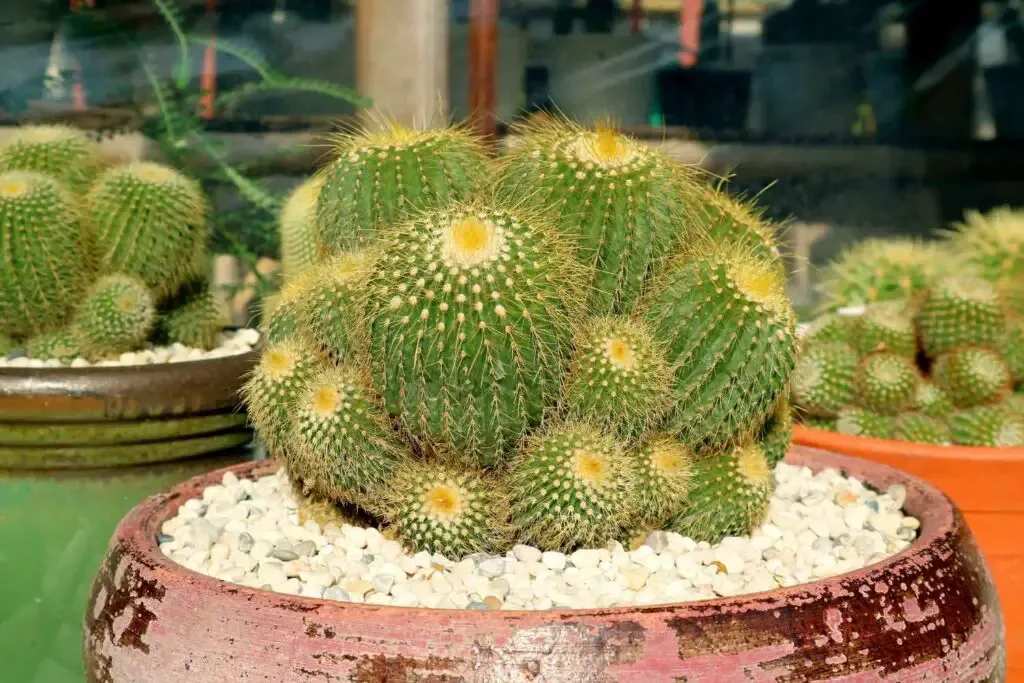
Follow Us:
Find us on YouTube, Instagram , Pinterest and TikTok! We love to Plant chat. We also comment, like and occasionally share your content to our daily stories. We’d love to see your plants. Share your joy in your houseplants. Happy Planting!
